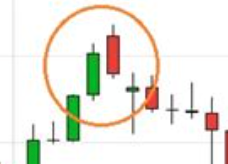Happy Monday Everyone! The so-called Meme stocks - with AMC and GME being two absolute superstars...


Happy Monday Everyone! The so-called Meme stocks - with AMC and GME being two absolute superstars...

Like playing with fire, those who trade stocks and options without respecting certain key facts...

The market’s been hot, right? Perhaps, the hottest! Look at this stuff - meme stocks have gone...

One question I get asked a lot goes something like: Have you ever missed an entry or a trade...

Here’s one question I always get a lot of: intraday trading is great, but how do I go about...

Trading patterns are at the core of my decision-making process. While these patterns allow me to...

Happy Monday everyone! The market’s been good and it has shown me no sign of slowing down… Over...